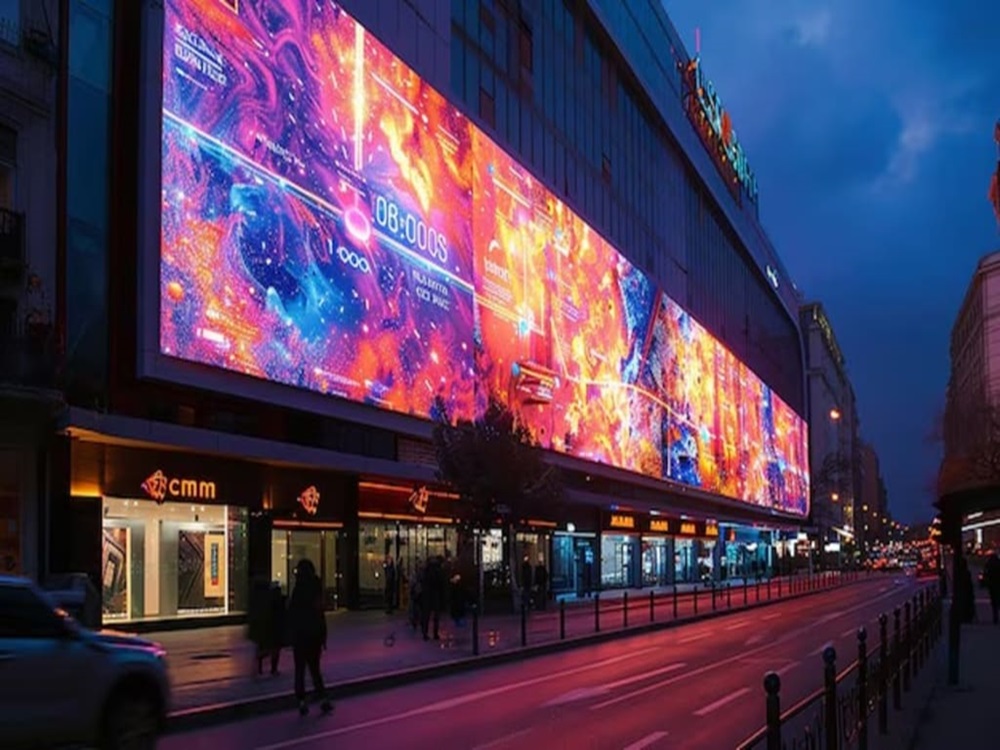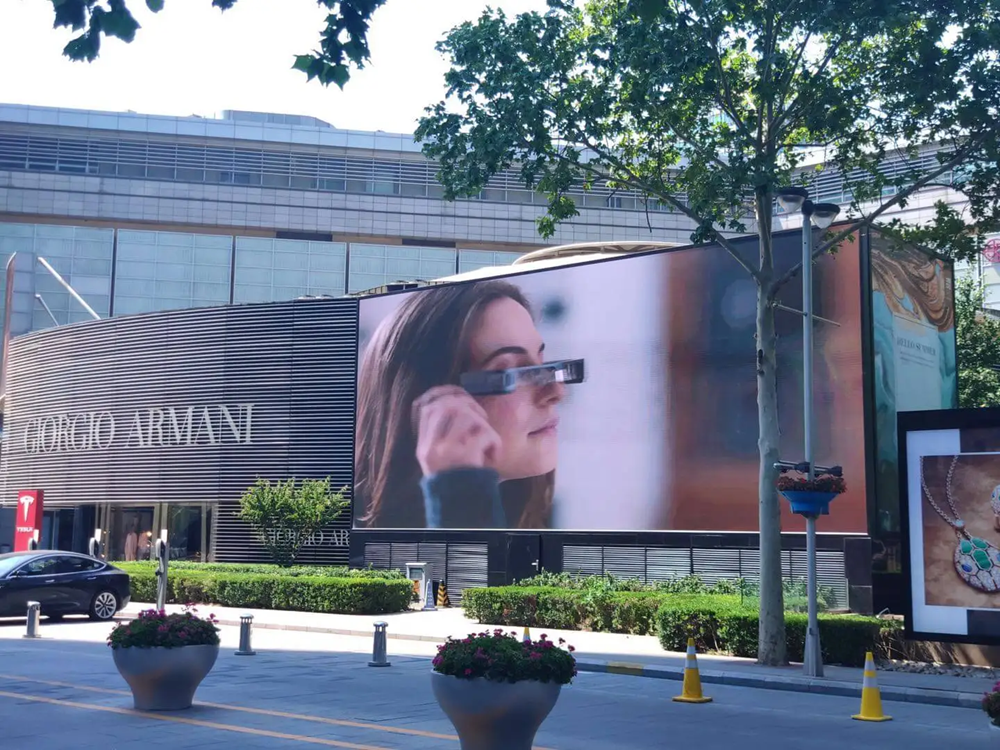As temperatures rise, how should we manage heat dissipation for outdoor LED advertising screens?
It’s well known that outdoor LED displays are relatively large and have high power consumption, which means they generate a significant amount of heat. If not properly managed, overheating can lead to malfunctions, short circuits, or even safety hazards.
This article explores how to handle heat dissipation and the underlying principles of overheating.
1. Understanding Heat Dissipation in LED Screens
Heat dissipation refers to the process of releasing excess heat generated during the operation of LED screens. Without proper heat dissipation, internal temperatures can rise rapidly and lead to serious issues.
All LED screens generate heat because not all electrical energy is converted into light—some is inevitably transformed into heat, especially during high-brightness, extended usage.
When heat accumulates and lingers, it affects performance: colors may dim, brightness may drop, and unexpected shutdowns may occur.
Over time, poor thermal management can damage internal components, shorten the lifespan of the display, and increase maintenance or replacement costs.
In extreme cases, overheating can pose safety risks, especially for large-scale outdoor LED installations. Therefore, temperature control is crucial for both performance and safety.
Effective heat dissipation ensures stable operation even in hot or humid environments, maintaining clarity, color accuracy, and brightness under all conditions.
Whether for indoor or outdoor use, every LED display must have an effective cooling system, which is why manufacturers integrate heat dissipation features into their designs.
2. Heat Dissipation for Different Sizes of Outdoor LED Displays
(1) For displays smaller than 20㎡
These are considered small LED displays. Usually, two small fans (approx. 500mm diameter) are sufficient, or fan size can be based on the installation environment.
(2) For displays larger than 20㎡
These fall under large LED displays and require more advanced heat dissipation planning. Methods vary depending on how the display is mounted:
If wall-mounted:
The dissipation solution depends on the space behind the display. For example, a 1㎡ room may require fan size to be selected according to LED panel size.
Fans should be side-mounted with protective mesh to avoid injury or damage during maintenance.
Aluminum louver covers are recommended for waterproofing the fan outlets.
Air conditioners may also be used if space allows.
If installed on a poster stand:
Fan-based cooling is recommended. Fans can be mounted on the rear, and louver structures can be placed between dual support columns to enable lateral ventilation—intake at the louver, exhaust via the top fans.
3. Cooling Tools and Techniques
-
Fans: One of the most cost-effective and widely used methods.
-
Heat sinks: Often integrated into the casing to increase surface area.
-
Integrated thermal conduction and dissipation: Helps protect LED chips from heat stress.
-
Heat pipes: Conduct heat from the source to the housing for dispersion.
-
Thermal radiation coating: Heat-dissipating paint is applied to aid surface-level dissipation.
-
Thermally conductive plastic housing: Thermal materials are mixed into plastic during molding.
4. Mainstream Cooling Technologies
As LED screens become brighter and more powerful, heat management becomes more critical. Common techniques include:
-
Structural airflow cooling: The casing is designed to guide airflow naturally.
-
Thermal plastic housings: Lightweight yet thermally efficient.
-
Aluminum heat sinks: Increases dissipation surface area.
-
Radiative surface coatings: Enhances surface-based heat dispersion.
5. Cooling Methods for LED Displays
Cooling strategies vary based on installation method.
5.1 Pole-Mounted Displays
Fans are installed on the rear aluminum panel to expel hot air.
Louvered structures prevent rain entry while maintaining airflow.
In dual-pole setups, add louvers between poles for intake and fans at the top for exhaust—creating an effective convection system.
5.2 Wall-Mounted Displays
If more than 1 meter away from the wall, use fans proportional to screen size.
Install fans at the top and protective mesh to prevent accidents.
Use aluminum louver covers on exhaust outlets to block rain and dust.
5.3 Air-Conditioned Wall-Mounted Displays
Best for large or high-temperature environments.
In colder regions: 1P AC per 12㎡.
In warmer areas: 1P AC per 9㎡.
Make sure AC units support automatic restart after a power outage.
Placement should also consider aesthetics and building structure.
6. Factors Affecting Heat Dissipation
Several factors determine the efficiency of LED display heat dissipation:
-
Screen size & power consumption: Larger, more powerful screens generate more heat.
-
Installation environment: Direct sunlight, humidity, wind, and dust affect performance.
-
Material and casing design: Use aluminum or thermally conductive plastics.
-
Airflow conditions: Poor spacing or blocked vents reduce cooling efficiency.
-
Cooling system setup: Fan/AC layout matters for even cooling.
-
Mounting method: Wall-mounted screens have less airflow than pole-mounted ones.
-
Regional climate: Hot, humid regions need more aggressive cooling strategies.
-
Operating time: 24/7 screens require robust and durable cooling.
7. How to Design Cabinets for Better Heat Dissipation
Tips for designing LED screen cabinets with optimal thermal performance:
-
Place air inlets at the bottom (but not too low) and exhaust vents at the top.
-
Ensure airflow passes key components and use filters to keep out debris.
-
Maintain enough distance between inlets and outlets to prevent air recirculation.
-
Leave 20–40mm between fans and internal components that may block airflow.
8. FAQs
(1) How to calculate LED heat dissipation?
Formula:
Heat Dissipation (W) = Total Power Input (W) – Light Output Power (W)
Example:
50W LED input – 15W light output = 35W of heat generated.
(2) How do LEDs dissipate heat?
-
Heat sinks: Metal components that increase dissipation surface.
-
Fans: Improve airflow and remove hot air.
-
Thermal materials: Transfer heat from LED to heat sinks.
-
Active cooling systems: AC or liquid cooling for large displays.
(3) Do LED screens get hot?
Yes, especially after long use. Although efficient, they still require proper cooling.
(4) What happens if LEDs overheat?
Performance declines—lower brightness, inaccurate colors, and even shutdown. Long-term overheating causes damage, shortening the screen’s lifespan.
9. Conclusion
Heat dissipation is critical for the stable operation and longevity of outdoor LED advertising displays. Proper thermal management prevents overheating and enhances performance.
Factors like screen size, environment, and power usage influence heat buildup. Effective airflow and the right materials help maintain safe and efficient temperatures.
For best results, always prioritize heat management. If you have questions, feel free to contact us.
Post time: Jun-12-2025


